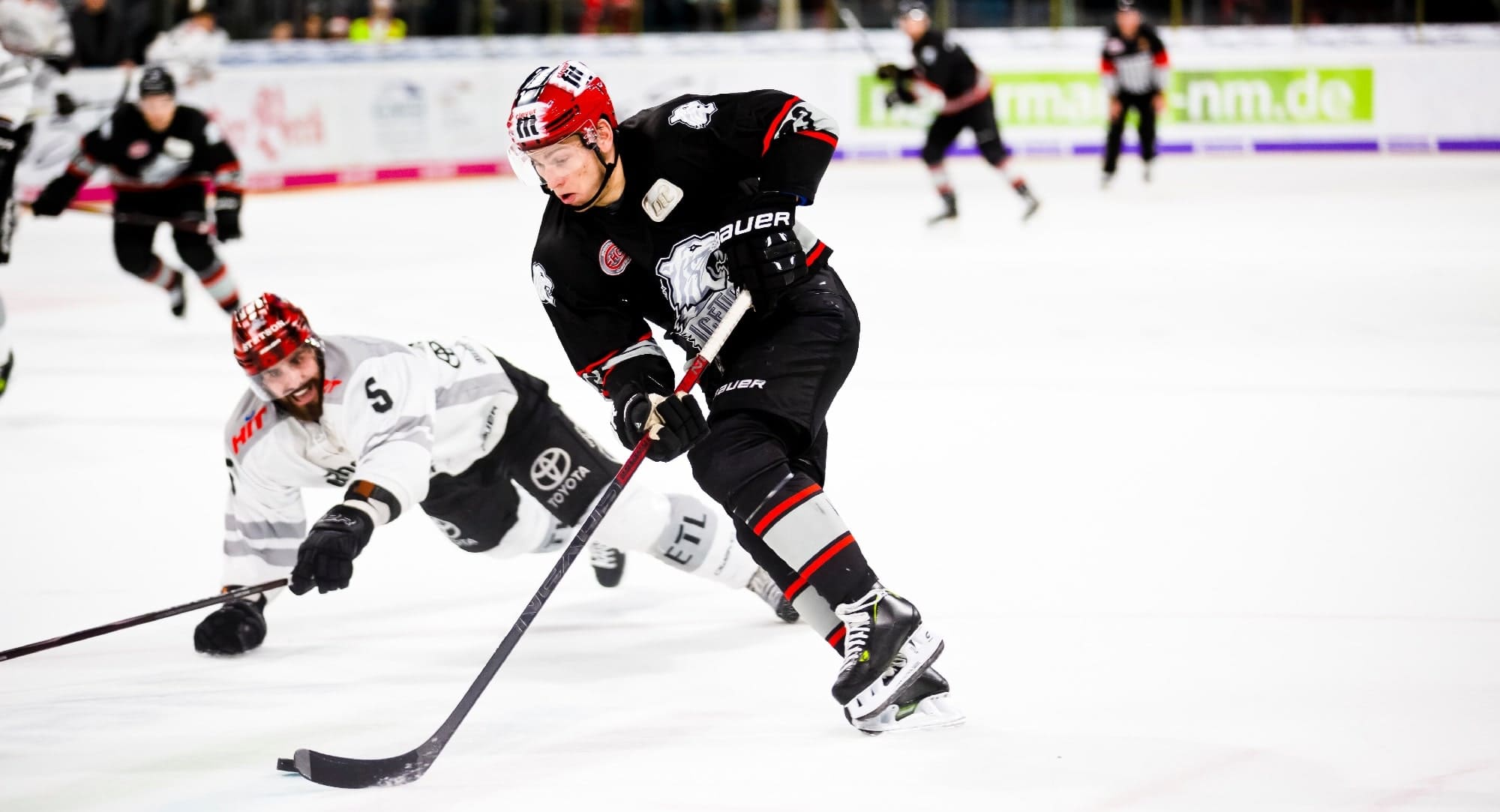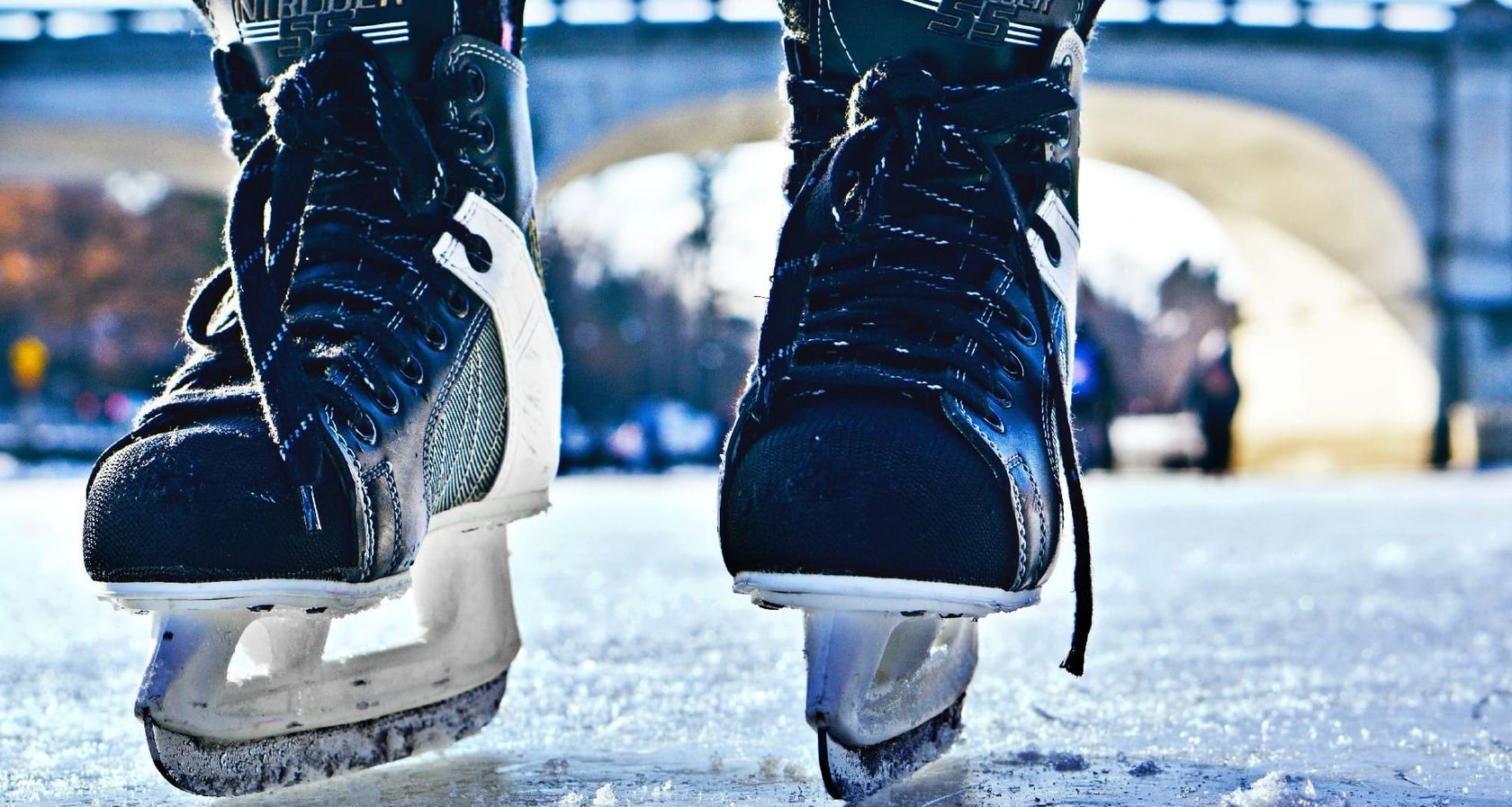Alongside these well-known applications for state-of-the-art steel technologies, the fact that the best hockey teams owe their success to the unique properties of the steel skate blades of famous hockey players has gone unnoticed. For the past 150 years, sports equipment manufacturers have moved from wood, animal bones, and leather straps to steel and innovative composite materials for ice hockey.
The History of Ice Skates
The precursor to modern hockey skates, where steel, plastic and composite materials have been combined in a single engineering idea, left a trace on the ice for several millennia. It is believed that the first ice skates were developed by hunters in Finland. Dating back to 3,000 BC, hunters used the bones of cloven-hoofed animals and drilled holes in them through which they threaded strips of animal hides to tie the blades to their feet. However, it did not occur to the ancient Finns to sharpen the bone blades and they could not push off the surface of the ice with their feet. Rather, hunters propelled themselves by pushing with a long pole held between their legs. By doing so, they were able to cover long distances while chasing their prey. Surprisingly, bone skates continued to be used into the 20th century in some places in Europe, because their design was so simple and the materials so easy to find. With the right skills, it can take just half an hour to fashion a pair of such skates.
Much later, in around 200 CE, humans made the first attempts to fashion skate blades from iron and attached a folded strip of copper to the bottom of a shoe. However, this design does not seem to have spread widely, maybe because unsharpened iron did not glide as well as bone.
Nevertheless, all further attempts to enhance the design of skates were associated with iron. An era called the ‘Little Ice Age’ that lasted in Europe for several years made ice skating an increasingly popular pastime. In the 15th century, the Dutch used wooden blades with a strip of iron. They had the same problem as the copper-bottom blades: they created friction against the ice, which did not allow them to go much faster. But a skater with iron blades could do away with the push pole and, instead, push off with each foot the way we do today. At the same time, skate blades were still tied to the skater’s shoes or boots until the 19th century, when an all-metal blade was invented in America. This clamped directly to the boot. Such improvements to the design allowed skaters to make sharper, faster turns and even jumps when needed.
And there was such a need. Over time, sportsmen started to use a stick and a puck for ice hockey (originally it was a game that is now called ‘field hockey’). A 1797 engraving depicts a man with a hockey stick and puck (those days it was called ‘bung’) sitting on a bench by the River Thames. This piece of art is believed to be the first image of a hockey player in history.
The rules of ice hockey became officially established by the late 1800s. Public interest in the new sport gave birth to a new sports equipment market niche.

The Most Famous Skate Makers
The first skates designed not only for ice skating, but also for hockey, were introduced to sportsmen in 1866. Starr’s hockey skate featured a wider blade, which was rocker-shaped and rounded at the front and back. Before Starr's design, skate blades were straight. The innovative shape of the gliding surface of the world's first hockey skates unleashed new opportunities for hockey players, allowing for tighter turns and sudden starts and stops. …Thanks to the skates, ice hockey started to become the sport we know today. For more than 60 years, the Starr hockey skates remained popular among hockey players, until they were pushed aside by better ‘sliding’ skates from competitors.
Canadian Cycle & Motor Company, or CCM, was one of them. At the end of the 19th century, the four largest Canadian bicycle manufacturers amalgamated to create a company called CCM. ССМ continued to manufacture both bicycles and Russell automobiles. As early as 1905, the factory’s strategic development plans underwent significant changes. In the bicycle market, supply outpaced demand, and the owners of CCM decided to launch a line of hockey skates. The idea was an inspiration. The factory had a lot of steel scrap left over from the manufacturing of automobiles and bicycles. The scrap was given new life by using it to make skate blades.
As a result, CCM captured the market for hockey equipment and dominated it until the late 1920s, when the Bauer family, owners of the Western Shoe Company, began producing the first skates in which the blade was permanently attached to the boot. The company’s signature model, the Bauer Supreme, was immediately popular among hockey players and ignited fierce competition between CCM and Western Shoe Company.
In 1937 CCM purchased Tackaberry (later called Tacks), a well-known brand. It dominated the market for skates until 2006 (!), when it was replaced by other popular lines. The first pair of Tackaberry skates was tailor-made in 1905 by a shoemaker named George Tackaberry for his neighbour, future hockey legend Joe Hall. Along with dizzying victories, this sportsman was known as one of the most feared players of his time (he earned the nickname ‘Bad’ Joe). Skates available at the time probably did not suit Bad Joe's style of play. In any case, George Tackaberry agreed to build unusual boots with a reinforced toe and heel. These skates helped CCM feel confident in the global market for sports equipment until 2004, when it was bought by Reebok (later Adidas-Salamon AG). Hockey equipment producer Adidas, together with Nike, dominate the markets for sports clothing and equipment. It should be noted that there was no absolute winner in the competition between CCM and Western Shoe Company. Both the well-modernised ‘descendant’ Tacks and upgraded Bauer Supreme are still popular among top hockey teams.

Innovative Steel For Ice Skates
The era of metallic skate holders came to an end when plastic blade holders Tuuk (dubbed ‘glasses’) appeared on the market 50 years ago. Metallic holders were completely replaced by plastic and graphite ‘glasses’. Such glasses were widely used, thus pushing hockey equipment manufacturers to focus fully on the enhancement of metallic blades. It is about the use of various alloys to make the skate running surface lighter and more durable without additional sharpening. For example, innovative Sandvik SanEdge® steel: Sandvik 14C28N. It is used to make the ТМ Bauer skates mentioned above. The steel is developed by Swedish steel company Sandvik. The alloy is designed so that skate blades do not require frequent sharpening and have high resistance to shocks. Brynäs IF, one of the top-tier teams in the Swedish Hockey League, says that the brilliant properties of Bauer steel blades help the Swedish team easily see off its rivals.
Manufacturers also work on the anti-corrosion properties of their blades. Generally, this is achieved by applying carbon coating to the surface. In addition to blades, various combinations of holders and blades have been designed that help ice hockey players skate much faster.
Around seven years, an idea came to a young Canadian engineer to develop spring-loaded skates that purported to help hockey players skate faster while also protecting players' joints and muscles against injuries. Shortly thereafter, a new Canadian manufacturer of ice hockey equipment, Bladetech Hockey, hit the market. The company first implemented the innovative idea literally, and the usual springs were added to unusual skates. Very soon, however, Bladetech Hockey's choice fell on steel skate blades with unique properties. The Flex-Force innovative technology adds flexibility to skate blades. When a hockey player is skating, the skates are pressed into the skating rink, thus releasing a compressed spring energy. The innovative Flex-Force steel blades were lighter than the original spring-loaded solution. New skates were introduced to the market just a year ago. However, they have already attracted the recognition of 35 NHL players. In September 2020, Bladetech Hockey signed a partnership agreement with the National Women's Hockey League and was designated as the ‘Official Blade of the NWHL and Official Partner of Women’s and Girls’ Hockey.’
Ice skate makers continue to search for new steel solutions, the implementation of which, as we see, can bring immediate success even on a highly competitive market=, where such giants as Adidas and Nike are present. New alloys with new functions are still to come to help ice hockey players skate faster towards victory.
